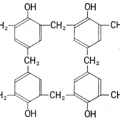INDEX
There is a substance that can flow electricity, that can not flow electricity.
Flow electricity substance is “Conductor”, can not flow electricity substance is “Insulator”, Silicon(Si) and Germanium (Ga) of the middle is the “Semiconductor”.
Metal is a conductor was well-known fact, but existence of conductivity resin besides the carbon fiver was also something of common knowledge by Dr. Hideki Shirakawa’s Nobel prize winning a prize in 2000.
Nobel Prize in Chemistry is won in 2000 by Dr. Hideki Shirakawa (August 20, 1936-) “Discovery of electro conductive polymer and development”.
Conductive resin plus additives polyacetylene is known in the study of Dr.Shirakawa, but have been found to obtain the electrical conductivity by adding additives in other resins.
The fact that electricity flows, is that the electrons move.
Polyacetylene does not have a gap that electrons flow in the conjugated double bond state.
There, by incorporating low molecular heterogeneous, to easily flow the electrons spread the gap.
The combination of new small molecules to develop a resin having conductivity and superconductivity have been advanced.
Typical comparison of the electrical resistivity of the conductive resin
| Base metal | Additional material | Resistivity (Ωm) |
|---|---|---|
| Polyacetylene | Additive-free | 10*5 ~10*9 |
| Iodine (l2) | 2~5 × 10-2 | |
| 5 fluoride arsenic (AsF5) | 2~3 × 10-3 | |
| Poly-p-phenylene | 5 fluoride arsenic (AsF5) | 5 × 10-2 |
| Polypyrrole | Perchloric acid (ClO4) | 1 × 10-3 |
| Polythiophene | Perchloric acid (ClO4) | 2 × 10-3 |
| 5 fluoride arsenic (AsF5) | 6.3 × 10-5 |
Representative value comparison of electrical resistivity
| Classification | Name of substance | Resistivity (Ωm) |
|---|---|---|
| Conductor | Silver | 1.59 × 10-8 |
| copper | 1.68 × 10-8 | |
| Gold | 2.21 × 10-8 | |
| aluminum | 2.65 × 10-8 | |
| iron | 1.00 × 10-7 | |
| stainless | 7.2 × 10-7 | |
| Graphite | 2.6 × 10-4 | |
| carbon | 1.64 × 10-5 | |
| Seawater | 2.0 × 10-1 | |
| Semiconductor | germanium | 6.90 × 10-1 |
| Silicon (silicon) | 3.97 × 10*3 | |
| Insulator | paper | 10*4 ~ 10*10 |
| Pure water | 2.5 × 10*5 | |
| Skin | 5.0 × 10*5 | |
| Dry wood | 10*10 ~ 10*13 | |
| Glass | 10*10 ~ 10*14 | |
| Polyester | 10*12 ~ 10*14 | |
| Hard rubber | 10*13 | |
| mica | 10*13 ~ 10*16 | |
| porcelain | 3 × 10*14 | |
| sulfur | 2.00 × 10*15 | |
| lacquer | 3~10 × 10*15 | |
| polyethylene | 10*16 ~ | |
| Quartz glass | 7.5 × 10*17 |
* Additives are sometimes referred to as the impurity dopant.
The conductive resin has a great potential.
<< We will introduce a unique video of YouTube. >>
New Invention – Circuit Scribe – Draw Circuits Instantly with conductive silver ink

